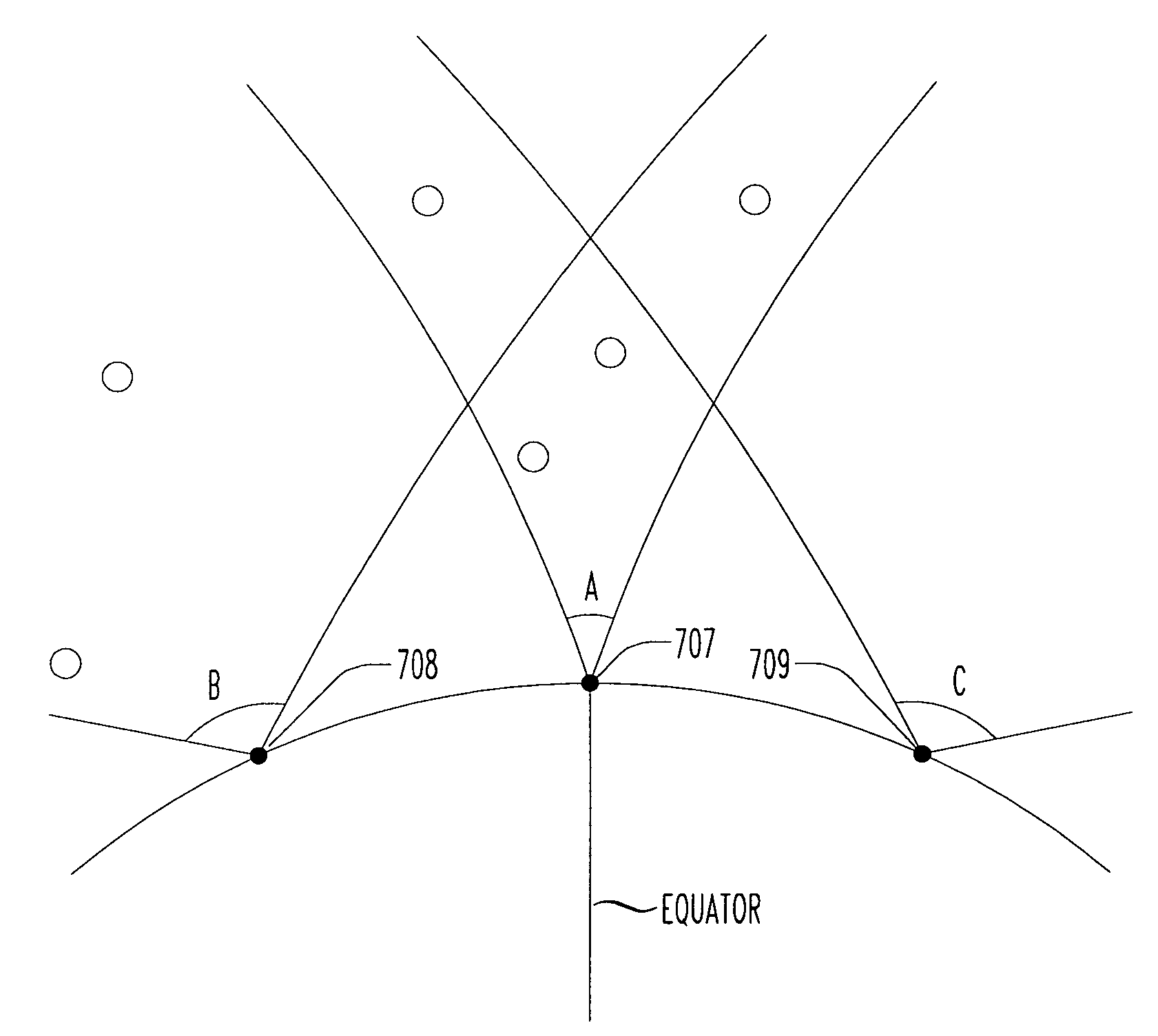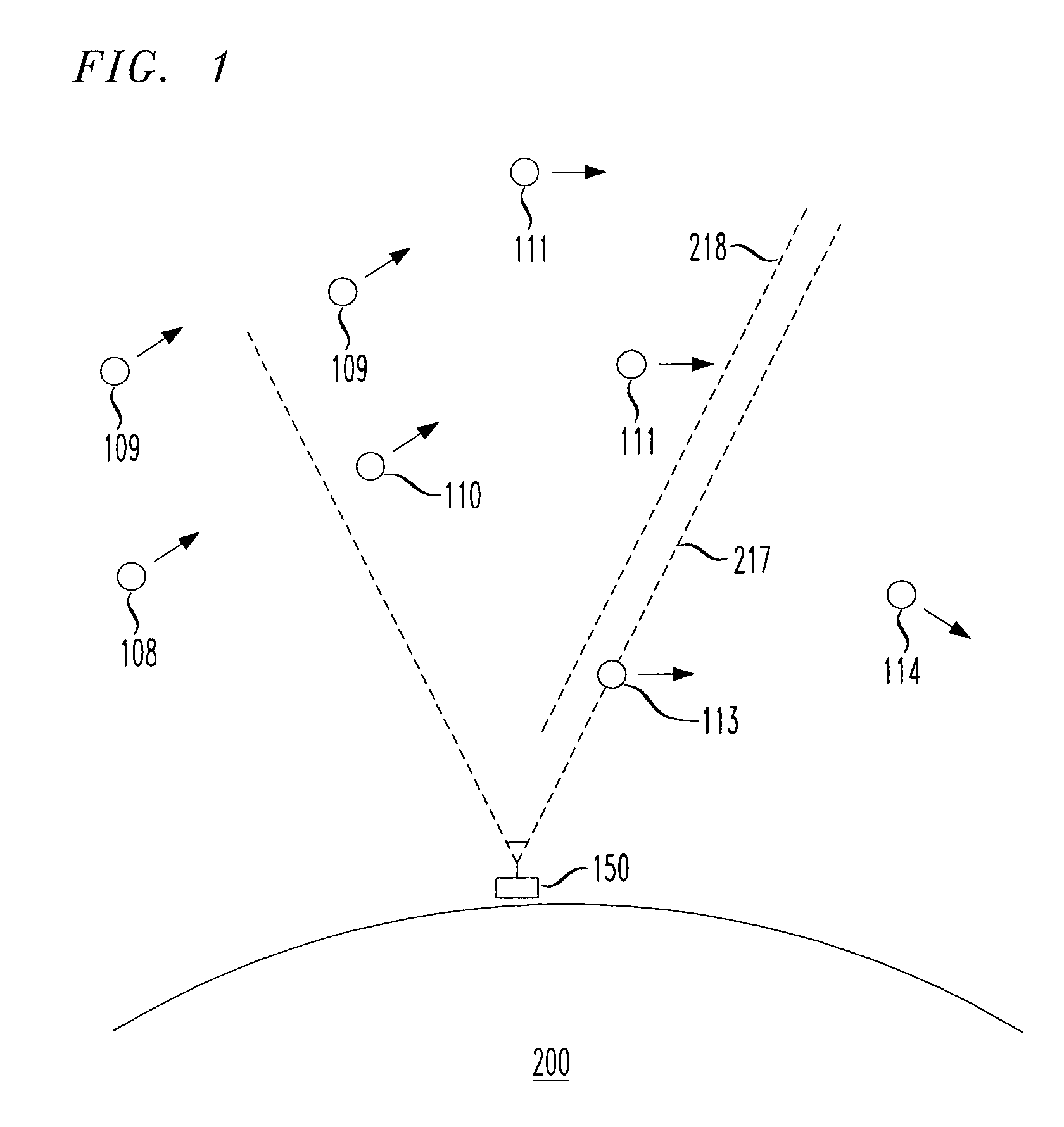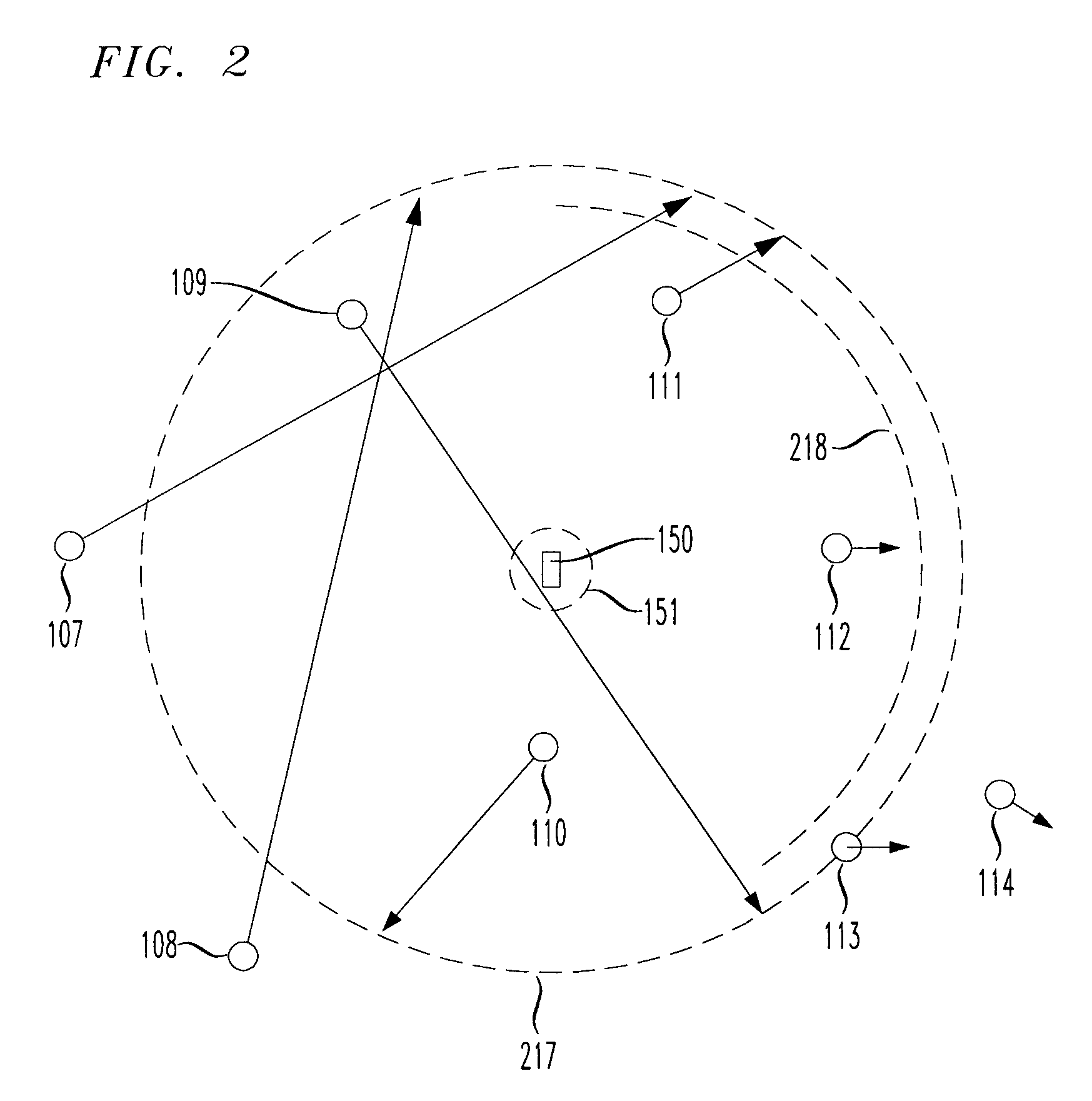Culled satellite ephemeris information based on limiting a span of an inverted cone for locating satellite in-range determinations
a satellite ephemeris and information technology, applied in the field of satellite ephemeris information culled satellite ephemeris information based on limiting the span of an inverted cone for locating satellite in-range determination, can solve problems such as satellite positioning changes
- Summary
- Abstract
- Description
- Claims
- Application Information
AI Technical Summary
Benefits of technology
Problems solved by technology
Method used
Image
Examples
Embodiment Construction
[0026]In a conventional GPS system, ephemeris data is provided to each GPS receiver to keep track of where each of the satellites in the GPS satellite network should be located in space. As part of the location determination process, each GPS receiver determines which of approximately 24 or more GPS satellites are to be used to determine GPS location. This determination requires a significant amount of real-time processing at the time of the location request, and a significant amount of time.
[0027]FIG. 1 shows a base station 150 of a wireless network (e.g., a cellular telephone network) determining which GPS satellites 101–124 are in a preferred group, e.g., being within a cone of space 217 with the longest dwell time within that space, in accordance with the principles of the present invention.
[0028]In particular, as shown in FIG. 1, of the twenty four or so GPS satellites 101–124 in the GPS system, only a sub-set 107–114 are visible to the base station 150 at any one time. Thus, b...
PUM
 Login to View More
Login to View More Abstract
Description
Claims
Application Information
 Login to View More
Login to View More - R&D
- Intellectual Property
- Life Sciences
- Materials
- Tech Scout
- Unparalleled Data Quality
- Higher Quality Content
- 60% Fewer Hallucinations
Browse by: Latest US Patents, China's latest patents, Technical Efficacy Thesaurus, Application Domain, Technology Topic, Popular Technical Reports.
© 2025 PatSnap. All rights reserved.Legal|Privacy policy|Modern Slavery Act Transparency Statement|Sitemap|About US| Contact US: help@patsnap.com



